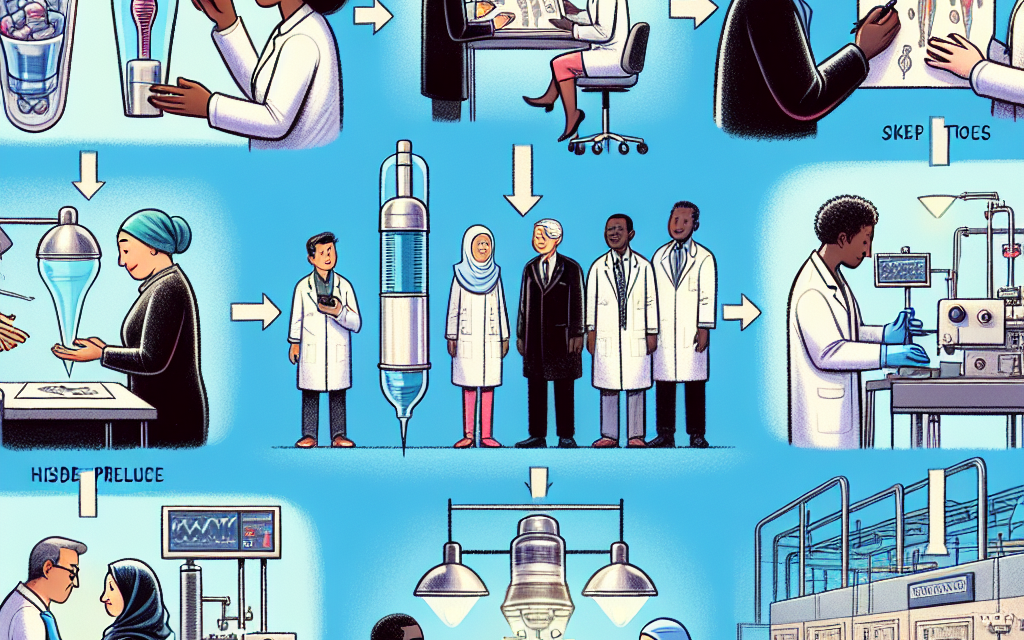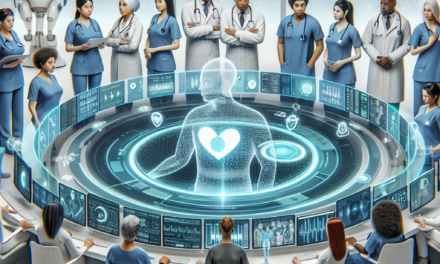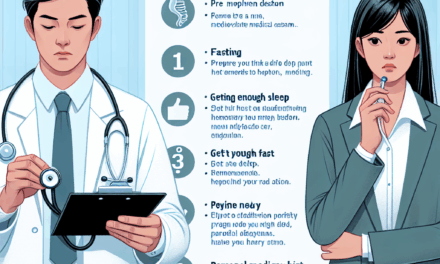The Journey of a Medical Device: From Idea to Patient Impact
The development of medical devices is a complex and multifaceted process that involves a series of stages, from initial conception to the final impact on patient care. This article explores the journey of a medical device, detailing the critical phases it undergoes, the challenges faced, and the ultimate goal of improving patient outcomes.
1. Ideation: The Birth of a Medical Device
The journey of a medical device begins with ideation, where innovative ideas are generated to address specific medical needs. This phase is crucial as it sets the foundation for the entire development process. The ideation stage often involves collaboration among various stakeholders, including healthcare professionals, engineers, and patients.
Identifying a problem is the first step in the ideation process. Healthcare professionals often notice gaps in existing treatments or devices, prompting them to think creatively about potential solutions. For instance, the development of insulin pumps stemmed from the need for better diabetes management tools that could provide patients with more flexibility and control over their condition.
Once a problem is identified, brainstorming sessions are held to generate ideas. Techniques such as design thinking and user-centered design are employed to ensure that the needs of end-users are prioritized. This phase may involve:
- Conducting surveys and interviews with patients and healthcare providers.
- Analyzing existing devices and their limitations.
- Exploring technological advancements that could be leveraged.
After generating a list of potential ideas, the next step is to evaluate their feasibility. This involves assessing the technical, regulatory, and market viability of each concept. For example, a novel surgical tool may show promise, but if it cannot be manufactured at scale or does not meet regulatory standards, it may not be pursued further.
Prototyping is a critical part of the ideation phase. Creating a prototype allows inventors to visualize their ideas and test their functionality. Rapid prototyping techniques, such as 3D printing, have revolutionized this process, enabling faster iterations and refinements based on feedback from potential users.
2. Design and Development: Turning Ideas into Reality
Once a viable concept is established, the next phase is design and development. This stage involves transforming the initial idea into a tangible product through rigorous engineering and design processes. The goal is to create a device that is not only effective but also safe and user-friendly.
The design process typically follows a structured approach, often guided by regulatory standards such as those set by the FDA in the United States or the European Medicines Agency in Europe. Key steps in this phase include:
- Defining product specifications and requirements.
- Conducting risk assessments to identify potential hazards.
- Creating detailed design documentation.
Collaboration with cross-functional teams is essential during this phase. Engineers, designers, and regulatory experts work together to ensure that the device meets all necessary standards. For instance, the design of a new cardiac stent must consider not only its mechanical properties but also biocompatibility and ease of deployment during procedures.
Prototyping continues in this phase, with multiple iterations being developed and tested. User feedback is critical, as it helps identify usability issues that may not have been apparent during initial design stages. For example, a wearable health monitor may need adjustments to its interface based on user interactions during testing.
Once the design is finalized, the development phase includes preparing for manufacturing. This involves selecting materials, establishing supply chains, and ensuring that production processes are scalable. Quality control measures are implemented to maintain consistency and safety in the final product.
3. Regulatory Approval: Navigating the Compliance Landscape
After the design and development phase, the next significant hurdle is obtaining regulatory approval. This process is critical for ensuring that medical devices are safe and effective for patient use. Regulatory bodies, such as the FDA in the U.S. and the European Commission in Europe, have stringent requirements that must be met before a device can be marketed.
The regulatory pathway varies depending on the classification of the device. Devices are typically categorized into three classes based on their risk level:
- Class I: Low-risk devices (e.g., bandages) that require minimal regulatory control.
- Class II: Moderate-risk devices (e.g., infusion pumps) that require premarket notification (510(k)).
- Class III: High-risk devices (e.g., pacemakers) that require premarket approval (PMA).
The submission process involves compiling extensive documentation, including clinical data, design specifications, and manufacturing processes. For Class III devices, clinical trials are often necessary to demonstrate safety and efficacy. These trials can be lengthy and costly, requiring significant investment from the developing company.
Once submitted, regulatory agencies review the application, which may involve additional requests for information or clarification. This back-and-forth can prolong the approval process, making it essential for companies to be well-prepared and responsive.
Successful navigation of the regulatory landscape is crucial for bringing a medical device to market. Companies often engage regulatory consultants to help guide them through the complexities of compliance, ensuring that all necessary documentation is in order and that they are prepared for any potential challenges.
4. Market Launch: Bringing the Device to Patients
After receiving regulatory approval, the next step is launching the medical device into the market. This phase involves strategic planning to ensure that the device reaches its intended audience effectively. A successful market launch requires a comprehensive understanding of the target market, competitive landscape, and distribution channels.
Marketing strategies play a vital role in the launch process. Companies must develop messaging that resonates with healthcare providers and patients alike. This often involves:
- Creating educational materials that explain the device’s benefits and usage.
- Engaging in outreach to healthcare professionals through conferences and seminars.
- Utilizing digital marketing strategies to reach a broader audience.
Distribution channels must also be established to ensure that the device is accessible to healthcare providers. This may involve partnerships with distributors, direct sales teams, or online platforms. For example, a new telehealth device may be marketed directly to hospitals and clinics, while also being available for purchase by consumers through e-commerce platforms.
Post-launch, companies must monitor the device’s performance in the market. Collecting feedback from users is essential for identifying any issues that may arise and for making necessary adjustments. This feedback loop can inform future iterations of the device or lead to the development of complementary products.
Additionally, companies must remain vigilant about regulatory compliance even after the device is on the market. Adverse events must be reported to regulatory agencies, and ongoing post-market surveillance is necessary to ensure continued safety and efficacy.
5. Patient Impact: Measuring Success and Outcomes
The ultimate goal of any medical device is to improve patient outcomes. Measuring the impact of a device on patient care is a critical aspect of its lifecycle. This phase involves evaluating clinical effectiveness, patient satisfaction, and overall health outcomes.
Clinical studies conducted during the regulatory approval process provide initial data on the device’s efficacy. However, real-world evidence is essential for understanding how the device performs in diverse patient populations. This can involve:
- Conducting post-market studies to gather additional data on safety and effectiveness.
- Collecting patient-reported outcomes to assess satisfaction and quality of life.
- Analyzing healthcare utilization data to determine cost-effectiveness.
For example, a new orthopedic implant may show promising results in clinical trials, but its long-term success can only be evaluated through ongoing monitoring of patients who receive the implant in real-world settings. This data can inform future improvements and guide clinical practice.
Patient feedback is invaluable in this phase. Engaging with patients through surveys and focus groups can provide insights into their experiences with the device. Understanding patient perspectives helps companies refine their products and address any concerns that may arise.
Ultimately, the success of a medical device is measured not only by its sales figures but by its ability to enhance patient care and improve health outcomes. Companies that prioritize patient impact are more likely to achieve long-term success in the competitive medical device market.
Conclusion
The journey of a medical device from idea to patient impact is a complex and multifaceted process that requires careful planning, collaboration, and adherence to regulatory standards. Each phase, from ideation to market launch and beyond, plays a critical role in ensuring that the final product meets the needs of patients and healthcare providers.
As the healthcare landscape continues to evolve, the importance of innovation in medical devices cannot be overstated. By understanding the intricacies of this journey, stakeholders can better appreciate the challenges and triumphs involved in bringing life-saving technologies to patients. Ultimately, the goal remains clear: to improve patient outcomes and enhance the quality of care through effective and safe medical devices.





